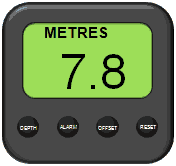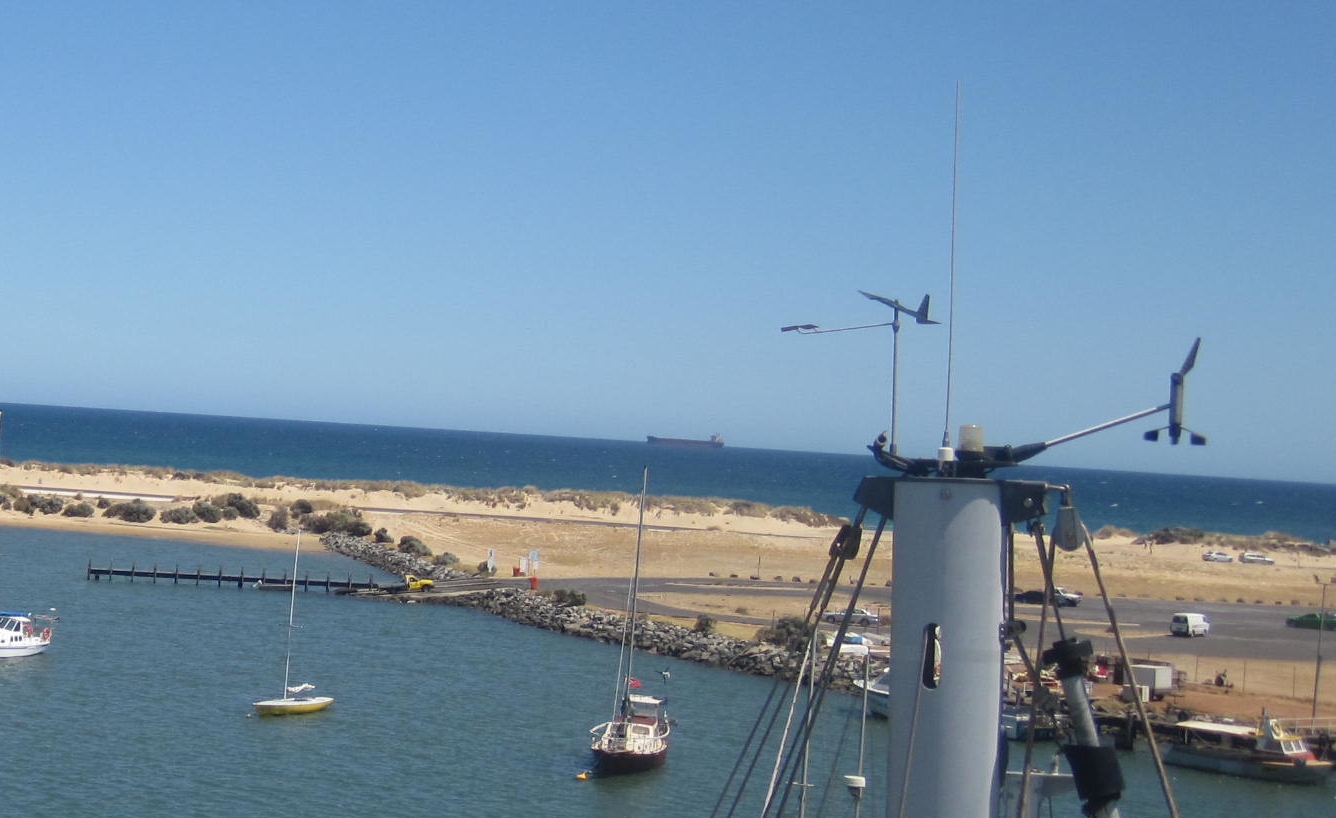Ship's Log, Depth sounder, Wind speed and direction
Transmits ultrasonic signals which are reflected from the seabed. The time taken for the signal to return is used to calculate the depth. They can be less accurate over soft mud, when going astern due to propeller wash and are also affected by large fish; shoals of fish; bubbles when crossing the wake of another vessel; different temperature layers and even sediment suspended in the water.

When in deeper waters over 100 metres, the depth sounder will fail to work correctly due to the returning signal dissipating due to the distance. The depth sounder will then give erroneous readings and can read shallow or give an error message. Most now just show dashes when the depth is over range.
The echo sounder should be checked for accuracy on a regular basis using a lead line.
Depth sounders can be set up to read from the bottom of the keel, the location of the transducer, or the waterline.
There are advantages and disadvantages for each way of setting up the echo sounder.
a) Set to read from the deepest part of the vessel.
b) Set to read from the transducer.
c) Set to give the actual depth.

The depth sounder is a fantastic aid to navigation and pilot planning. It can be used during a passage to warn that the depth is falling below the required minimum or a required maximum, or to sound when a certain depth is reached.
Records the speed and distance through the water.
There are various types, hull fitted and trailing logs. The one shown
opposite uses an impeller fitted in the hull which spins when the
vessel is moving, sending pulses to the instrument. The instrument
calculates the speed of the vessel from the pulses.
The impeller should be cleaned on a regular basis and the instrument
checked and adjusted for accuracy using the log over a measured
distance preferably twice, returning along the reciprocal to counteract any
tidal flow. In some areas they have surveyed markers that define one nautical mile that are installed precisely for this purpose.

Being able to monitor wind direction and speed is helpful not just for sailing yachts, but all vessels. It allows you to monitor the progression of weather forecasts and to better evaluate the conditions to be expected for any potential passage. On their own, they measure what is called apparent wind which is the combined effect of your boats speed and direction, and the wind speed and direction.

If they are combined with a fluxgate compass and speed log, they can then calculate the actual true wind direction and speed.
Sailors will also often install a standard, non-electronic wind indicator to provide a backup to the electrical system. In the image you can see both a manual wind indicator at the top left of the mast, and a combined electronic anemometer and wind vane for the instruments. In the middle, you can see the VHF whip aerial that is installed at the top of the mast to get the maximum range.
A fluxgate compass is an electromagnetic device that employs two or more small coils of wire around a core of highly permeable magnetic material. It is used to directly sense the direction of the horizontal component of the Earth's
magnetic field.
The advantages of a fluxgate compass over magnetic compasses are:

